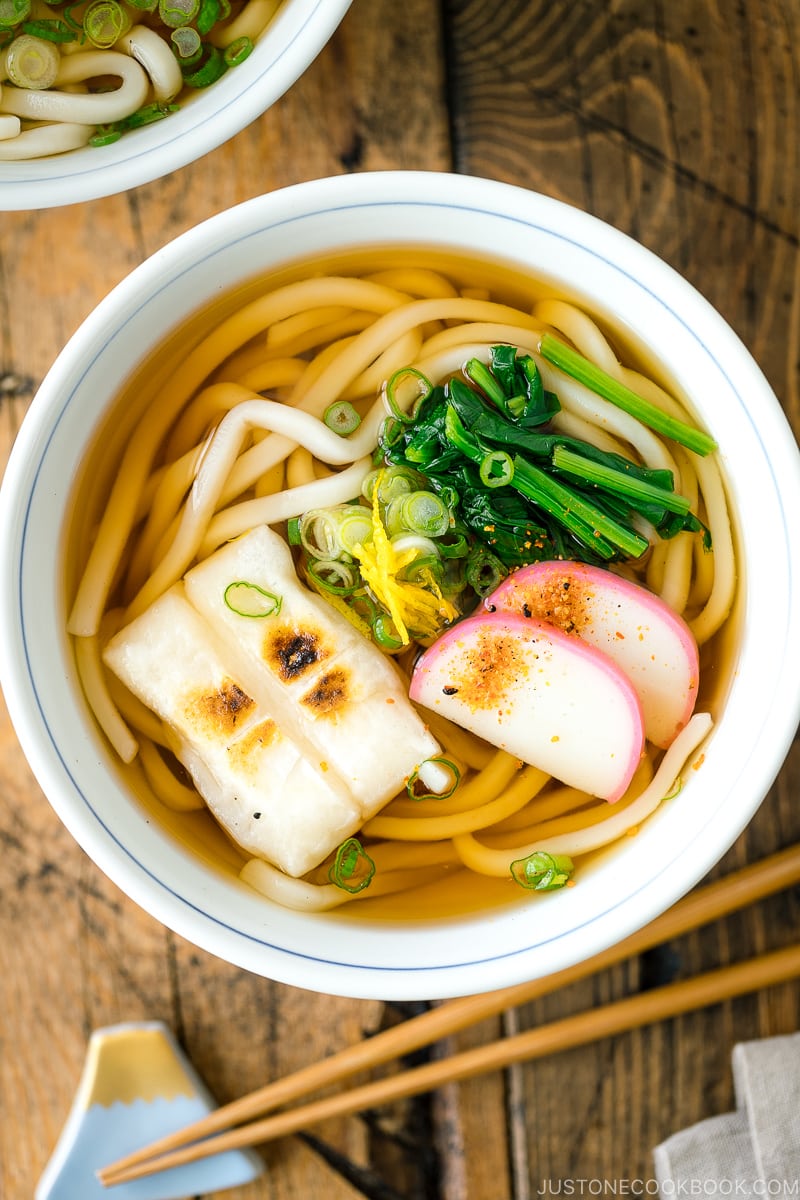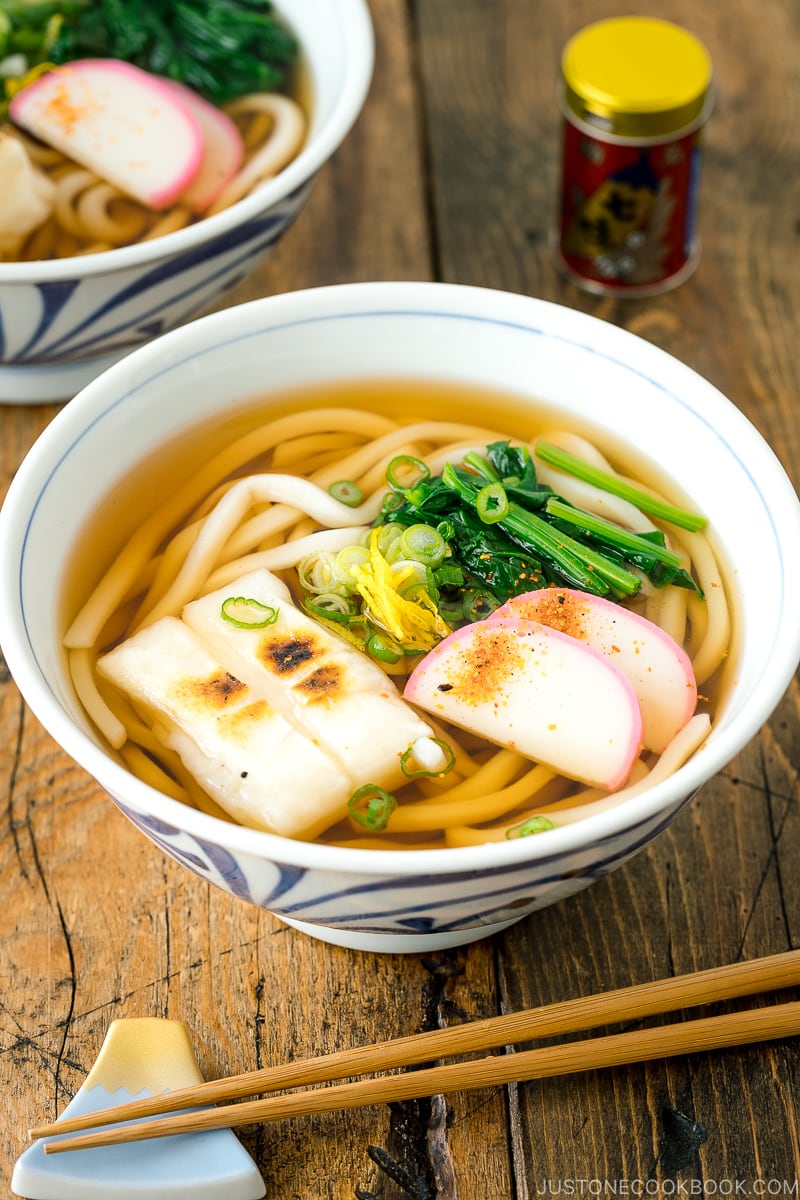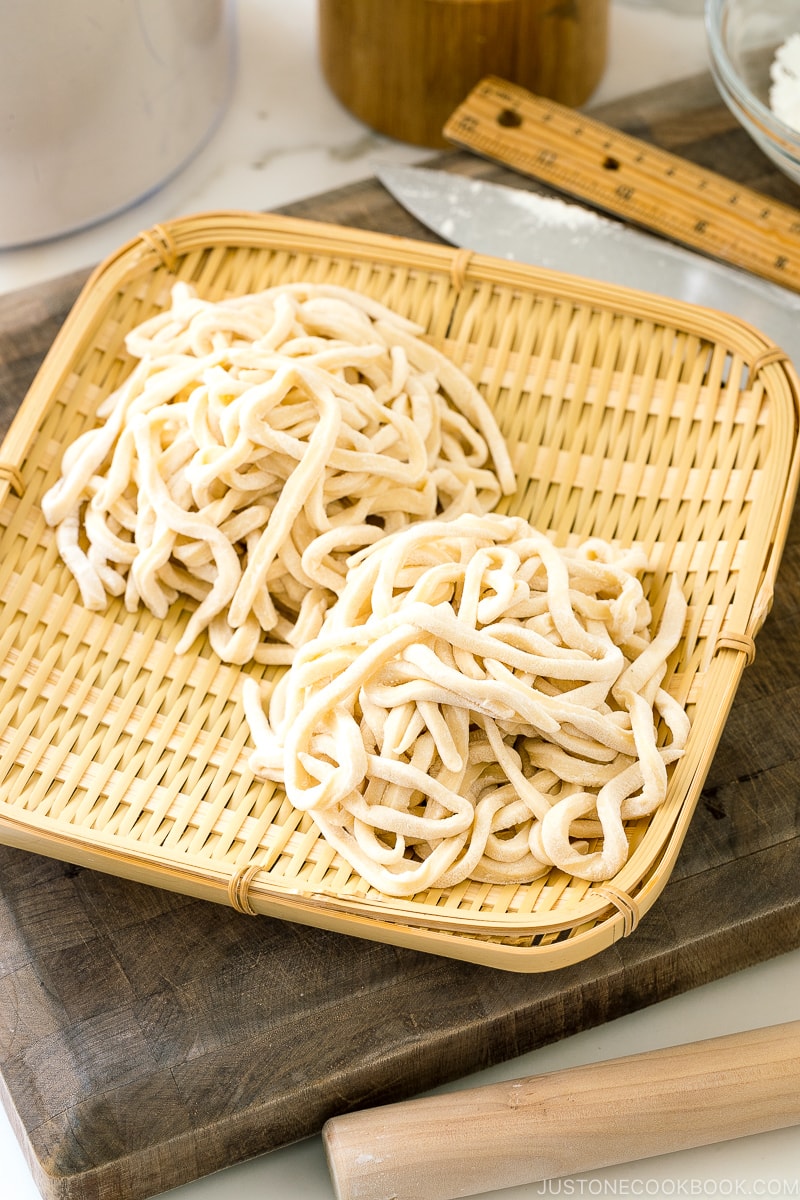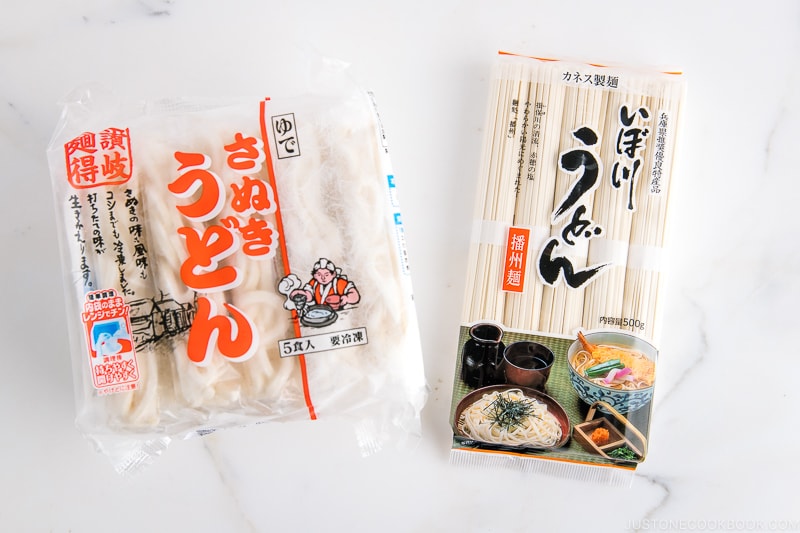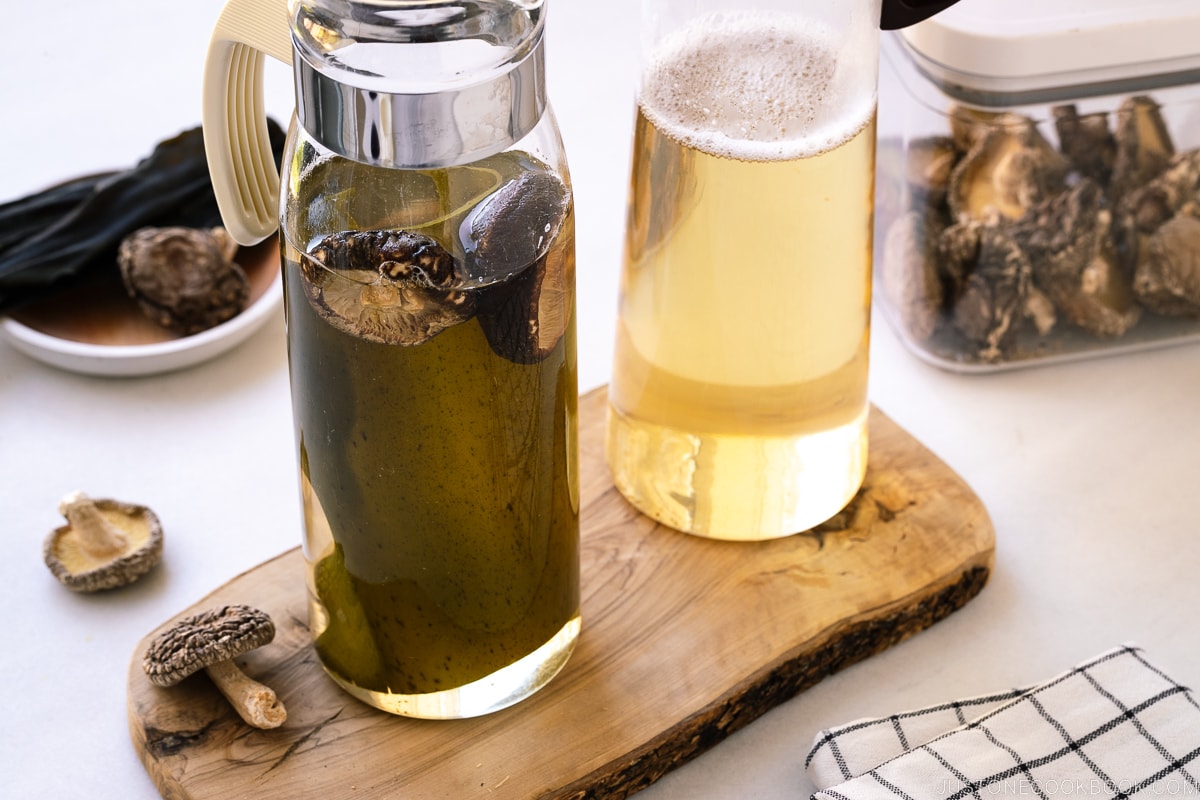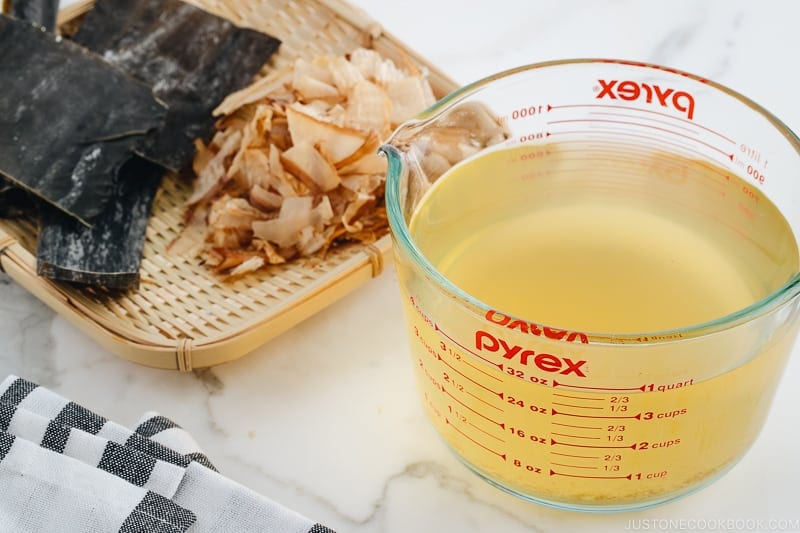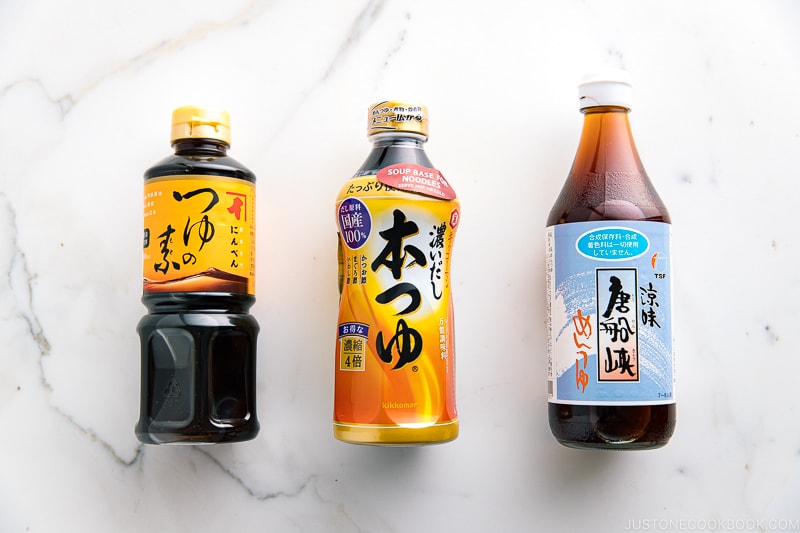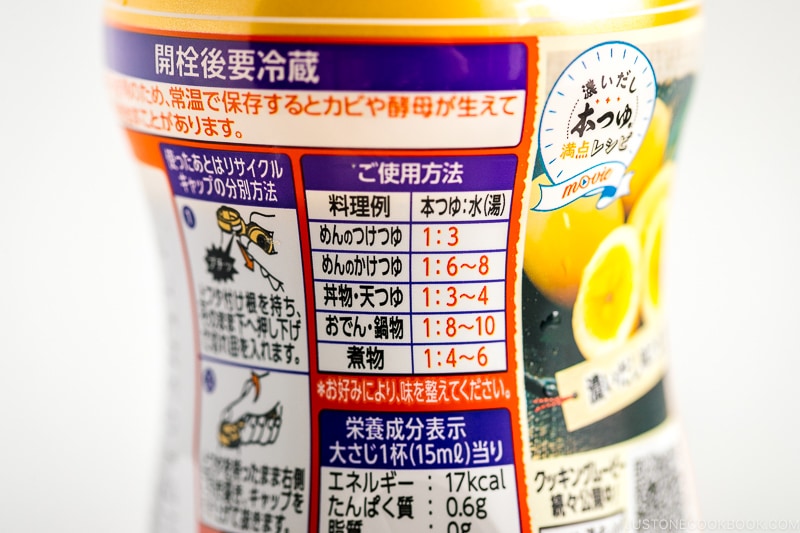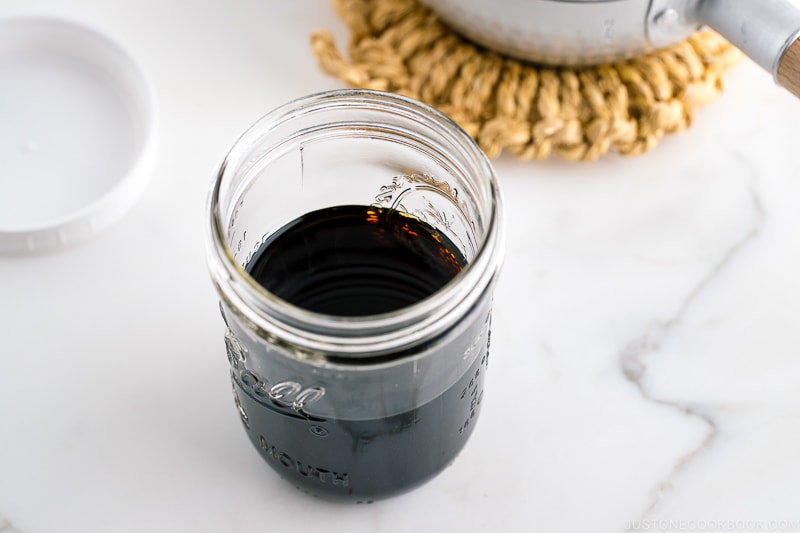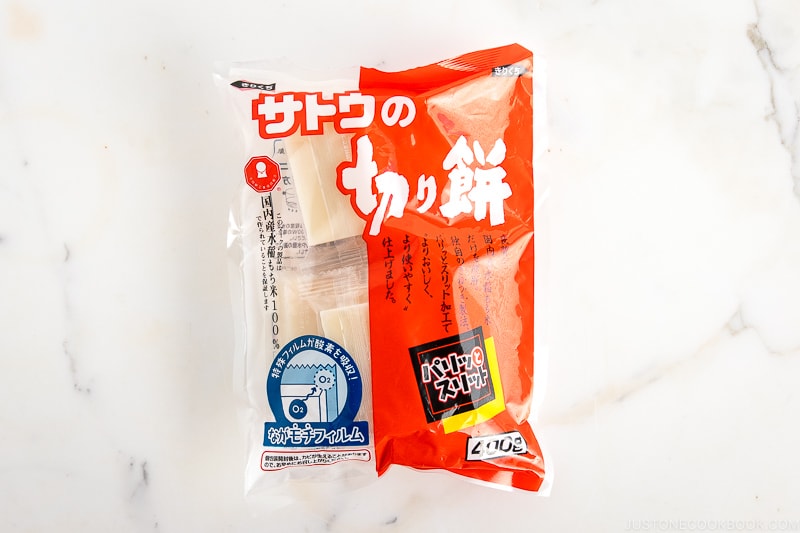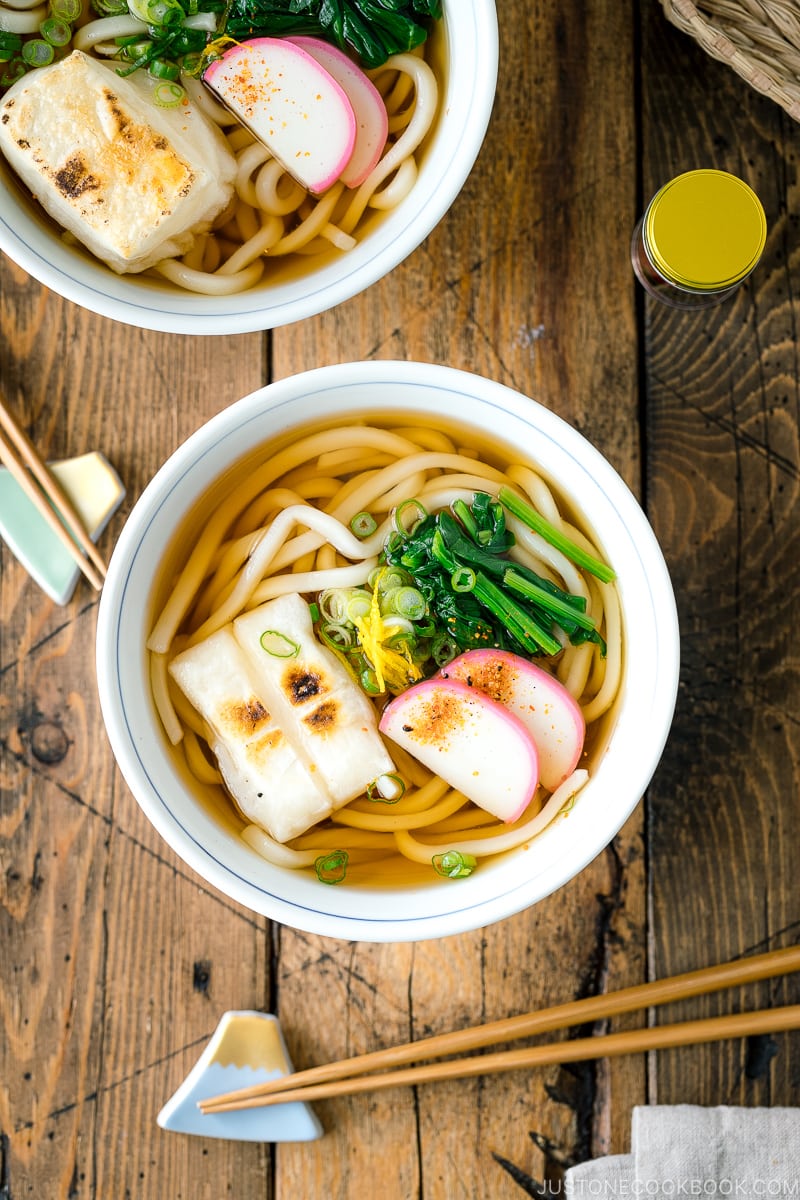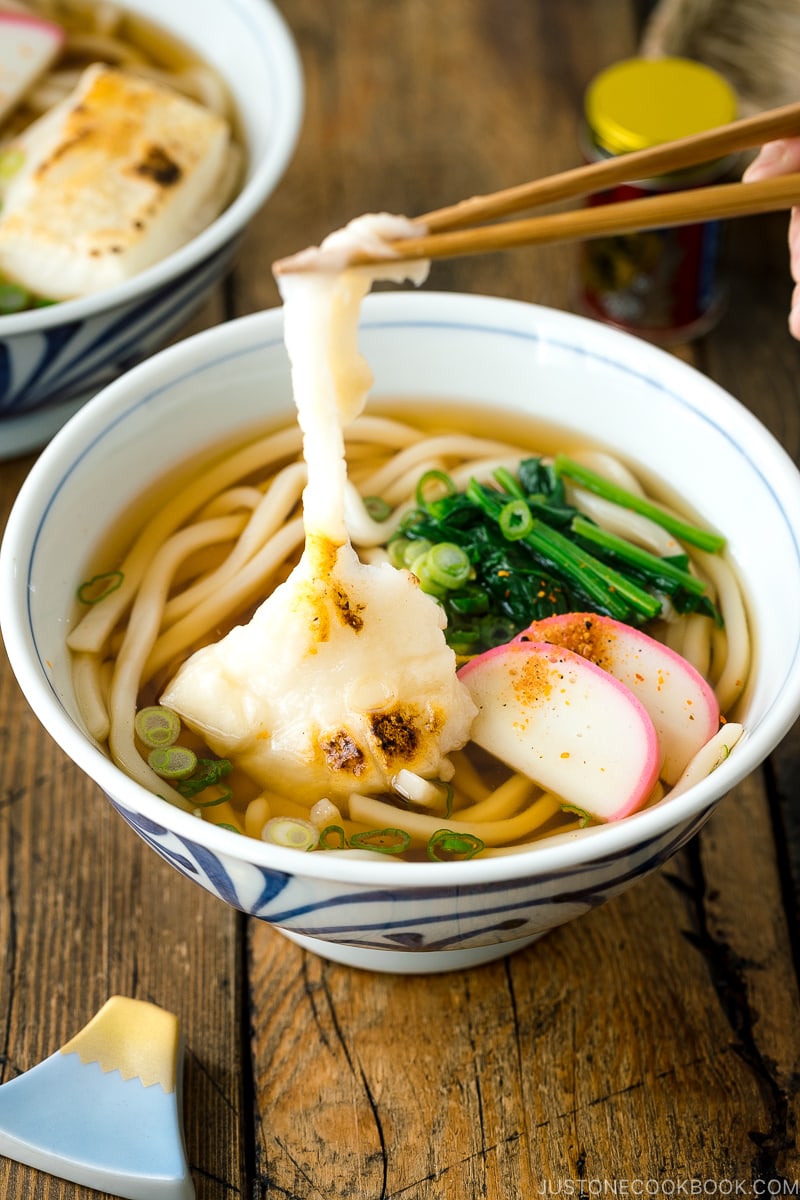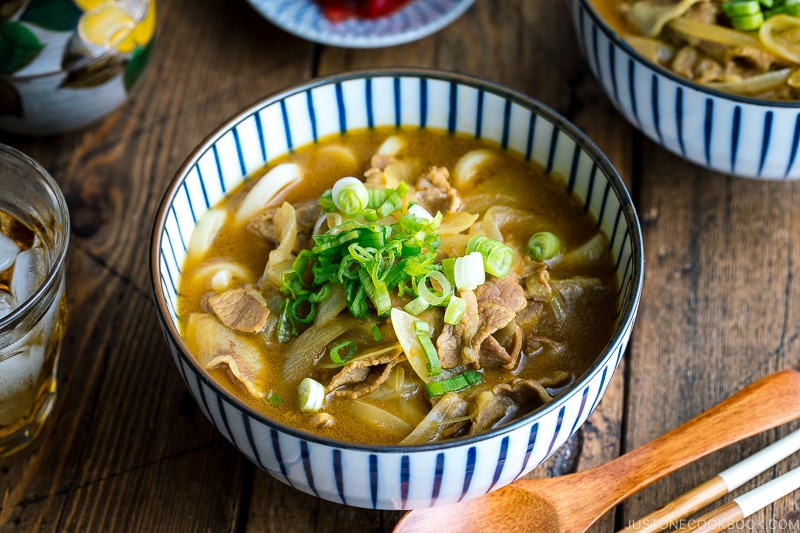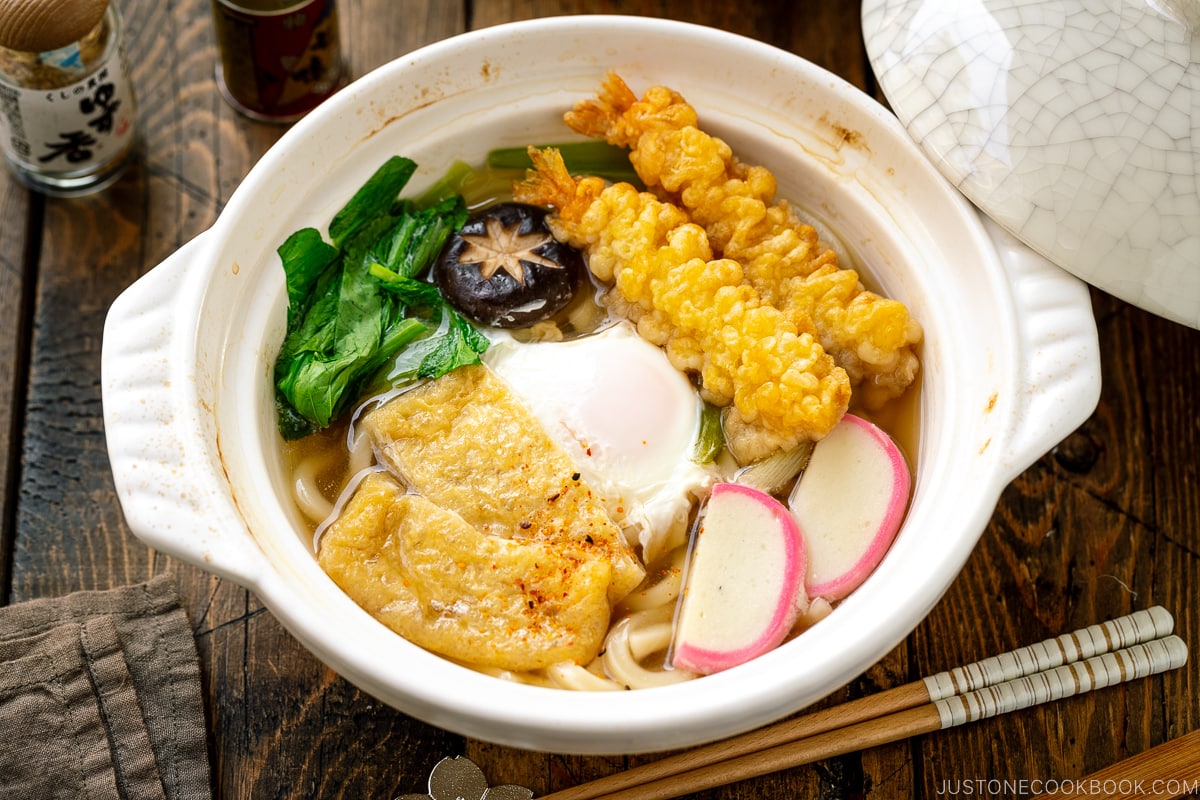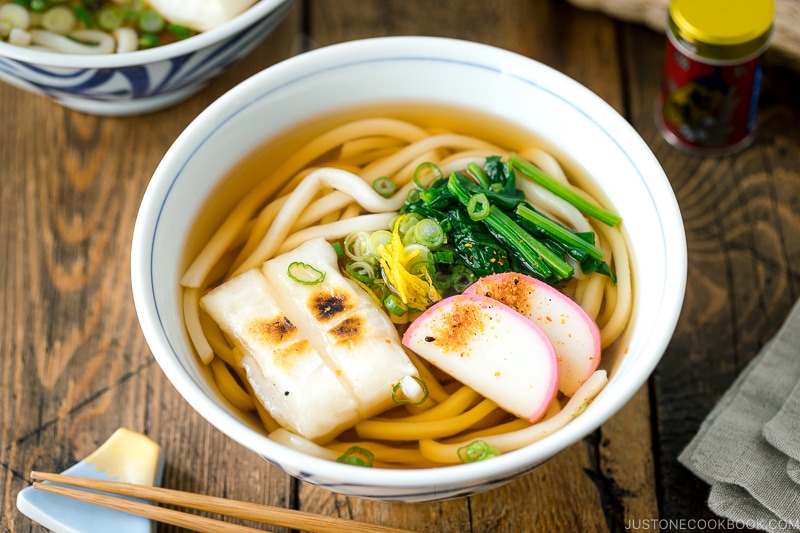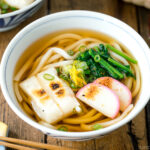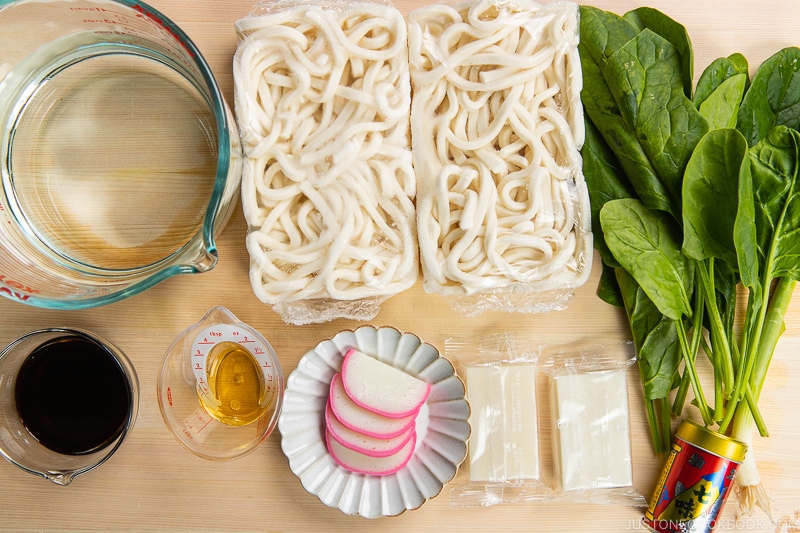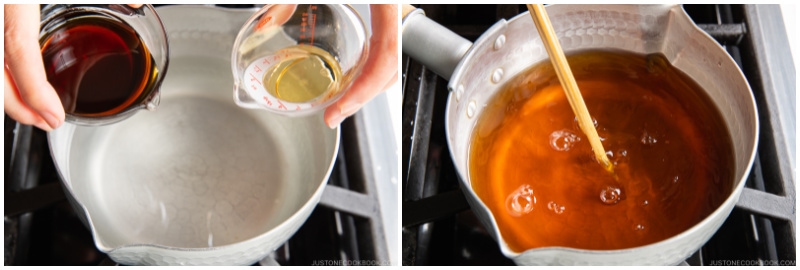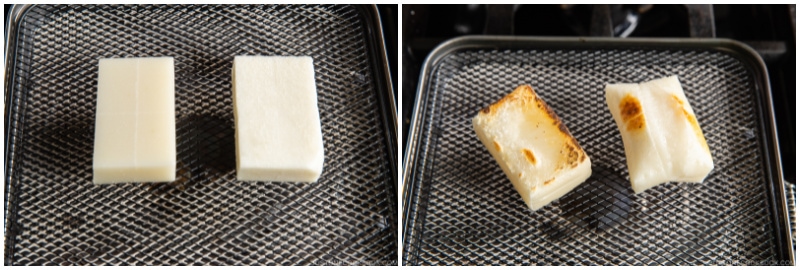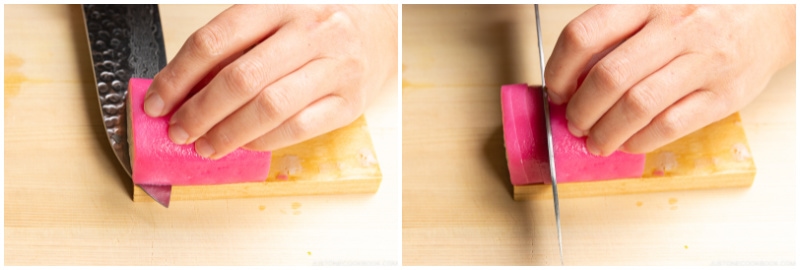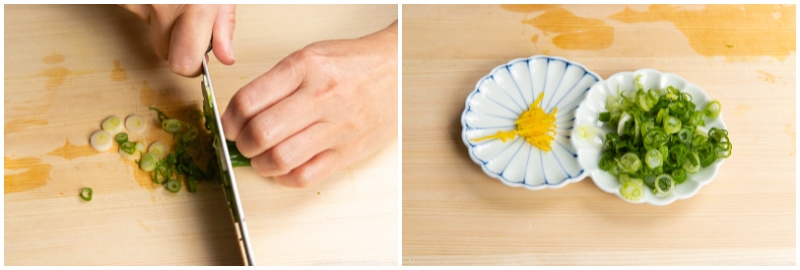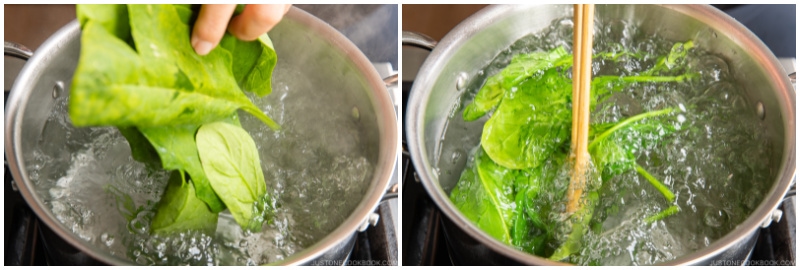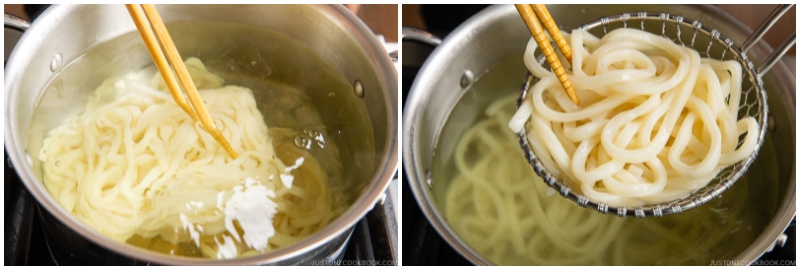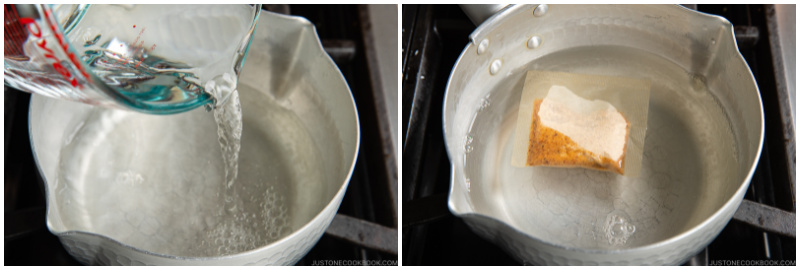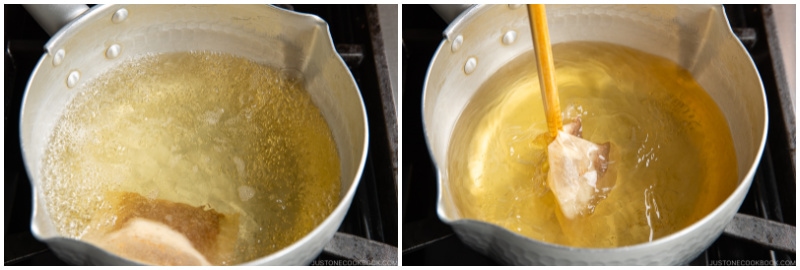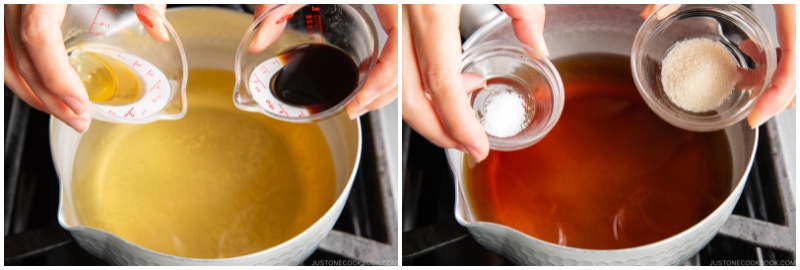Growing up in Japan, I would devour anything that comes with mochi. When I say mochi, it usually means the plain rice cake and not the dessert “mochi” known outside of Japan (we call the sweet version “daifuku” or “daifuku mochi”). One of the dishes that I always got excited about was Chikara Udon (力うどん), which is simply Udon Noodle Soup with Mochi on top. I know, it’s really simple, but to me, the addition of mochi is equivalent to the fluffy whipped cream on top of your favorite pie or cake.
What is Chikara Udon?
As I explained earlier, chikara udon is a hot udon noodle soup topped with mochi (餅). Chikara (力) means power or strength in Japanese. In the old days, rice cake was a celebratory food and was considered the source of power and strength. Also, the Japanese word for being powerful is “chikara mochi (力持ち)” with different kanji characters for “mochi (持ち)” but it’s a fun wordplay for chikara (Mochi) udon. Do you need extra power to boost your energy? Let’s make Chikara Udon!
Ingredients for Chikara Udon
Udon noodles — See different types below Soup broth — Dashi stock (vegan or regular), soy sauce, mirin, sugar, and salt Toppings — Kiri mochi (rice cake), wakame seaweed, spinach
How to Make Chikara Udon
Different Types of Udon Noodles
If you’re ambitious, you can always make fresh udon noodles from scratch. It’s easy to make but it does take time as we have to rest the dough between the kneading process. Fresh udon noodles are amazing, and you definitely want to give them a try when you can! For a quick meal, use frozen or dried udon noodles that are available at Japanese/Asian grocery stores. I personally like the frozen udon noodles as they are thick and chewy. They are cooked already, so you just need to cook for one minute in boiling water. Dried udon noodles are very convenient as the packages are smaller and you can store them in your pantry for a long time. I do keep both types in my kitchen. Dried noodles have various thicknesses, so the cooking time varies. You must cook udon noodles in separate boiling water and not directly in the soup because the starch will cloud your delicious soup.
How to Make Udon Soup Broth (Plus Vegan Option)
To make udon broth, you need to combine the following five ingredients:
Dashi (Japanese soup stock) Soy sauce Mirin Sugar Salt
If you want to make a vegan broth for your udon noodles, you need to make Vegan Dashi with dried kelp and dried shiitake mushrooms. For the rest of us, I recommend making Awase Dashi—the combination of kombu and katsuobushi (dried bonito flakes). It’s really simple! If you’re not sure, watch my 1-minute video to see how to prepare awase dashi. It only takes 20 minutes or less! Are you not in the mood to buy obscure ingredients (kombu and katsuobushi)? You can always make dashi with a dashi packet or dashi powder. I prefer using a dashi packet over dashi powder for its superior flavor. Dashi is fundamental to Japanese cooking and you want a good stock to make Japanese food!
Shortcut for Making Udon Broth (Not Vegan)
If you’re like me who makes udon noodle soup for lunch regularly (like two to three times a week), another convenient option is to use bottled mentsuyu (tsuyu)—a soup base for noodles. Each brand has specific instructions for the mentsuyu-to-water ratio to dilute before using it. All you need to do is dilute the mentsuyu with water (I usually add a splash of mirin). If you go this route, you can skip making dashi! And as always, you can make mentsuyu from scratch!
How to Cook Mochi
Let’s talk about the type of mochi you need to get for this recipe. You need kiri mochi (切り餅), which are the precut, dried mochi white rice cakes that come in individually wrapped packaging. You will find it at Japanese grocery stores all year round. However, it’s possible you may have a hard time finding this at Asian grocery stores as it’s very specific to Japanese cooking. To toast kiri mochi, use a toaster oven (it heats up faster), an oven, or a frying pan over the stove until mochi is golden and puffed up. I recommend toasting until at least one side of the kiri mochi is nicely browned.
Topping Options Besides Mochi
Now that you have udon noodles, soup, and mochi, you can add the rest of the toppings. When udon noodles are served in a bowl and poured with hot soup, it is called Kake Udon (Kake Soba if you’re serving soba noodles instead of udon). “Kake” (pronounced [kah keh]) means “pour something over” in Japanese. It’s a plain udon noodle soup with simple garnishes like scallions, wakame seaweed, and a few slices of fish cake (if fancy). You’ll find a variation of udon noodle soups under different names when it stars a specific topping. Examples:
Chikara Udon (this recipe) features toasted mochi Ebi Tempura Udon features shrimp tempura Kitsune Udon features seasoned inari age (tofu pouch) Niku Udon features stir-fried beef
You can add a small portion of other toppings. I usually think about the color of the dish when I decide on toppings. Here are some of the popular toppings and garnishes. (v) is for vegan options.
Green onion/scallion (v) Spinach (v) Aburaage (fried tofu pouch) (v) Grated nagaimo (Japanese yam) (v) Tenkasu/Agedama (tempura scraps) (v) Tororo kombu (shaved kombu) (v) Nori seaweed (v) Wakame seaweed (v) Natto (v) Kamaboko (fish cake) Chikuwa (fish cake) Satsuma age (fish cake) Onsen tamago (poached egg) Fresh Kimchi Or any leftover protein or cooked vegetables
3 Important Cooking Tips
Cook the noodles when everyone is seated or almost ready to eat. Soggy noodles in lukewarm udon broth is the worst experience. Make sure you can serve the dish when everyone’s ready to eat! Don’t overcook the udon noodles. Cook them right before you serve. All the toppings should be ready to go! Make the broth hot before serving. Most toppings are room temperature; so you’ll need super hot broth to warm them up immediately!
Frequent Asked Questions
Is this vegan?
Yes, it can be vegan if you use vegan dashi to make the broth. Please read the blog post as I explained in detail.
Can I make this ahead?
You can make the broth and prepare the toppings of your choice ahead of time. However, I highly recommend cooking udon noodles and toasting mochi right before you serve.
How do I keep the leftovers?
Udon noodles absorb soup easily and turn soggy if left uneaten once they start to cool. I recommend cooking only the exact amount of noodles you need and do not cook extra.
Other Delicious Udon Noodle Recipes
Curry Udon Nabeyaki Udon Vegetarian Udon Miso Nikomi Udon Yaki Udon Oxtail Udon
Wish to learn more about Japanese cooking? Sign up for our free newsletter to receive cooking tips & recipe updates! And stay in touch with me on Facebook, Pinterest, YouTube, and Instagram.
